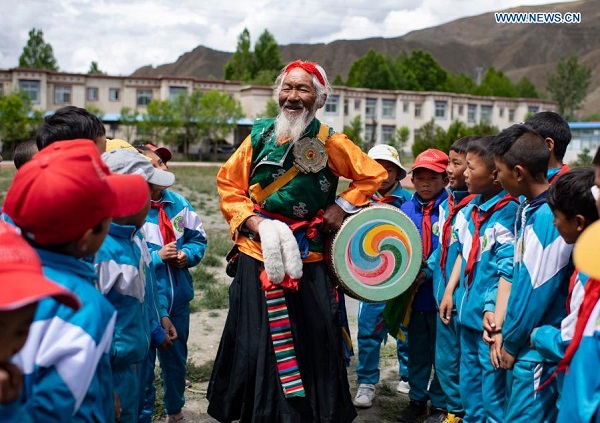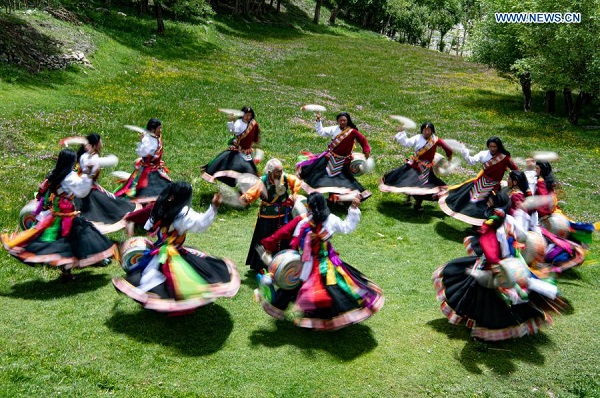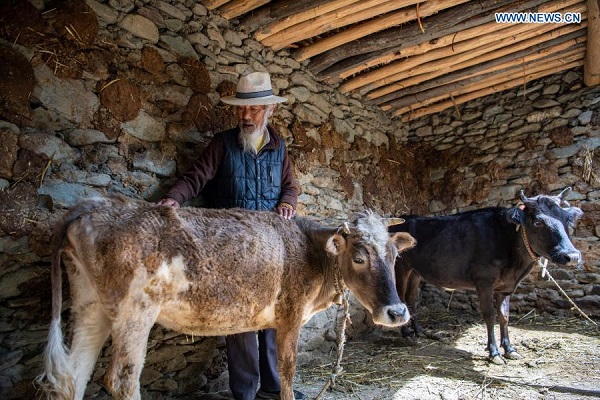
Nyima is seen in Jiuhe Village of Qonggyai County in Shannan, southwest China's Tibet Autonomous Region, July 1, 2020. (Xinhua/Purbu Zhaxi)
Jiuhe Zhuo dance, originated in Qonggyai County of Shannan, has a history of more than 1,300 years. It has been a favorite dancing form for local people in Shannan to pray for good luck since ancient times and was dubbed the waist drum dance in Tibet. The 76-year-old Nyima, an inheritor of Jiuhe Zhuo dance, which is a national intangible cultural heritage now, began to learn the dance from his father at the age of nine. Now, Nyima lives with his offspring at a new Tibetan house. After decades of studying, he has formed a unique dancing style and once won a national award for folk arts. Nyima taught his grandson Cering Toinzhub the Zhuo dance, trained dozens of apprentices and formed a Zhuo dance performing team in Jiuhe Village. He hopes the traditional folk art will be inherited and promoted. The plateau region in southwest China will celebrate its 70th anniversary of the peaceful liberation this year.

Nyima prepares before performance at a primary school in Qonggyai County in Shannan, southwest China's Tibet Autonomous Region, July 2, 2020.(Xinhua/Purbu Zhaxi)

Nyima wearing costume for Jiuhe Zhuo dance poses in Jiuhe Village of Qonggyai County in Shannan, southwest China's Tibet Autonomous Region, July 1, 2020. (Xinhua/Purbu Zhaxi)

Nyima (C) performs Jiuhe Zhuo dance in Jiuhe Village of Qonggyai County in Shannan, southwest China's Tibet Autonomous Region, July 1, 2020.(Xinhua/Purbu Zhaxi)

Nyima (C) poses for a photo with his daughter and grandson in front of his house in Jiuhe Village of Qonggyai County in Shannan, southwest China's Tibet Autonomous Region, March 19, 2021. (Xinhua/Purbu Zhaxi)

Nyima checks his livestock in Jiuhe Village of Qonggyai County in Shannan, southwest China's Tibet Autonomous Region, July, 2 2020. (Xinhua/Purbu Zhaxi)

